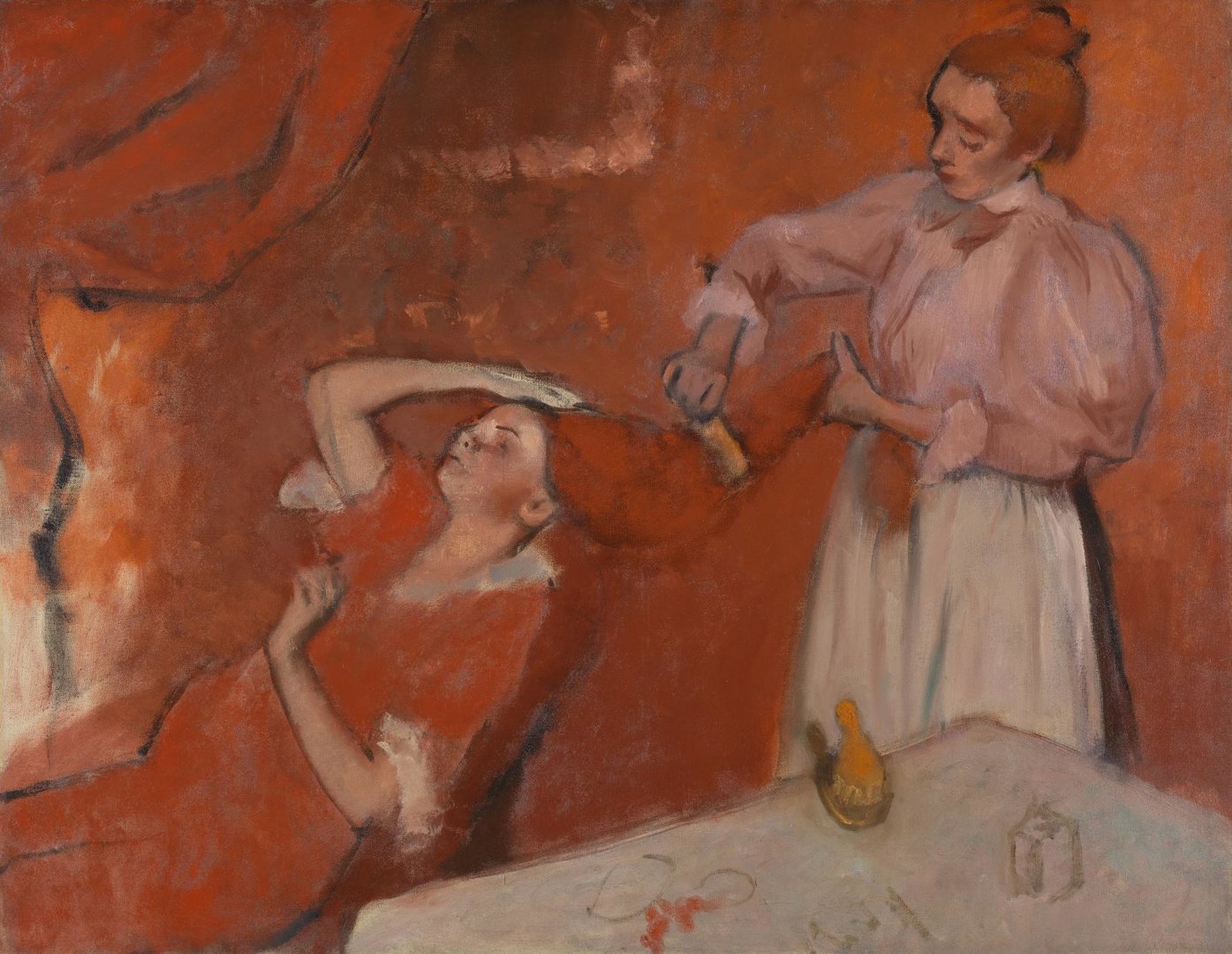Hilaire-Germain-Edgar Degas's 'Combing the Hair' ('La Coiffure')
Audio description
This is a description of 'Combing the Hair', also known in French as 'La Coiffure', by Edgar Degas. It’s oil on canvas painted about 1896. Just over one metre high and almost one and a half metres wide, it is in a gilded frame.
This striking picture stands out for its intense use of the colour red, as if seen through a fiery red filter. A woman sits on a low chair, facing to the left. Her long red hair is being combed by a woman standing behind her, on the right. Behind them is an orange-red wall and scarlet curtain.
The space feels shallow, almost claustrophobic. In the foreground to the right, the corner of a white table top juts into the composition. On it are objects relating to a dressing table, but only loosely sketched in. A brush and hand mirror provide a focus point of marigold orange.
The women are behind the table. From their clothes, the relationship between them can be understood as the seated mistress on the left, attended by her uniformed maid on the right. She wears a white apron, partially hidden by the table. Standing upright, her head reaches the top of the painting, her auburn hair pulled up into a high bun on top of her head. She wears a pink blouse with full, mutton-leg sleeves billowing out from her shoulders. Facing left, her downward gaze is on her hands. With her left she is lifting the long, heavy, length of her mistress’s red hair. Her right arm reaches over the top, pulling a comb through the midpoint of the hair.
The seated mistress leans back in her chair at 45 degrees, so her head is at the height of the maid’s waist. The mistress wears a loose, short sleeved dress, which creates a flat area of bright red. Her right arm is thrown up, as if in surprise or resistance, her hand pressing down on her hairline. This is presumably to relieve the tug she feels from the comb. Her other arm, nearest to us, is bent and tucked into her side. She may not be reclining through choice, but perhaps because of the vigour of the maid’s combing, which is pulling her head back.
The painting feels experimental and loosely finished. Black outlines are drawn freely and rapidly, with a broad dry brush, leaving the texture of the canvas exposed in places. The facial features of the women are sketchy, but the two figures form a dynamic diagonal across the composition from bottom left to top right. It follows the reclining figure of the mistress, her hair bridging the gap between her and the maid, who continues the line upward. The structure has a powerful tension, reinforced by the intense use of red paint and the possible tension between mistress and maid.
Behind the women, on the red wall, some lighter paint is dabbed to suggest what might be a picture frame. This is partly obscured by a heavy red curtain, which cuts across the top left corner of the composition, the lower part of the fabric created by a couple of cursory black brushstrokes. This is the most daringly sparce area of the picture.
The painting remained in Degas’s studio until the end of his life, so we don’t know if he intended to continue working on it.
It is perhaps unsurprising that one of the picture’s past owners was the painter Henri Matisse, an artist who was also known for his ground-breaking experiments in colour and line.


